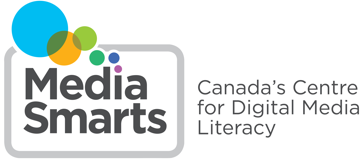

Facing Online Hate
The Facing Online Hate tutorial examines how the Internet is used to spread and incite hate – and how parents, community leaders and educators can respond. The first part of the tutorial provides an overview of hate and prejudice online and how it can radicalize young people and have a negative impact on both online and offline communities. The second part covers how teachers and parents can prepare young people to recognize online hate, to respond and to push back when they see it.

Encountering Racist and Sexist Content Online
Bigotry, in its various forms, has been with us for a long time – at least since the Greeks coined the word “barbarian” to mean “anyone who isn’t us,” and likely longer – so it’s not surprising that racism, sexism and other prejudices have found a home on the Internet. MediaSmarts’ new report Young Canadians in a Wired World: Encountering Racist and Sexist Content Online looks at how often Canadian youth are exposed to prejudice, how it makes them feel and how they respond to it.

Pyramid Power: How Hate Spreads Online
The last few weeks have shed an unprecedented light on the use of digital media to spread and inspire hatred. Michael Zehaf-Bibeau, the perpetrator in the attacks on Canada’s National War Memorial and Parliament buildings, appears to have been motivated in part by exposure to online postings by a self-described member of the Islamic state[1], and the Federal government has already stated that it intends to create tools to remove online content that promotes the “proliferation of terrorism.”[2]

So Many Choices!
This lesson introduces the students to the first steps in finding information on the Internet. Specifically, this lesson helps students understand the basic good practices of searching for something online: be accompanied by a trusted adult, start with a safe site and understand the use and power of using good links and keywords to find what they are looking for and to avoid bad results.

Taming the Wild Wiki - Lesson
Students are introduced to Wikipedia, the user-edited online encyclopedia, and given an overview of its strengths and weaknesses as a research source.

Can You Spot the Ad?
In this lesson, students will learn about the concept of branded content and will learn to differentiate between branded images and videos and non-branded images and videos in online and offline contexts through a series of questions and discussions.

Promoting Ethical Online Behaviours with Your Kids
Most kids live as much of their lives online as they do offline. But on the Internet there are lots of moral and ethical choices that don’t have to be made offline. These tips lay out ways you can help your children develop a moral compass to guide them through those choices.

Deconstructing Online Hate
The internet has become a prime means of communication worldwide and this unprecedented global reach – combined with the difficulty in tracking communications – makes it an ideal tool for extremists to repackage old hatred, raise funds and recruit members. As the internet has grown and changed, hate groups and movements have adapted, creating websites, forums and social network profiles, becoming active in spaces such as online games and even creating parallel versions of services such as Twitter, YouTube and GoFundMe.
